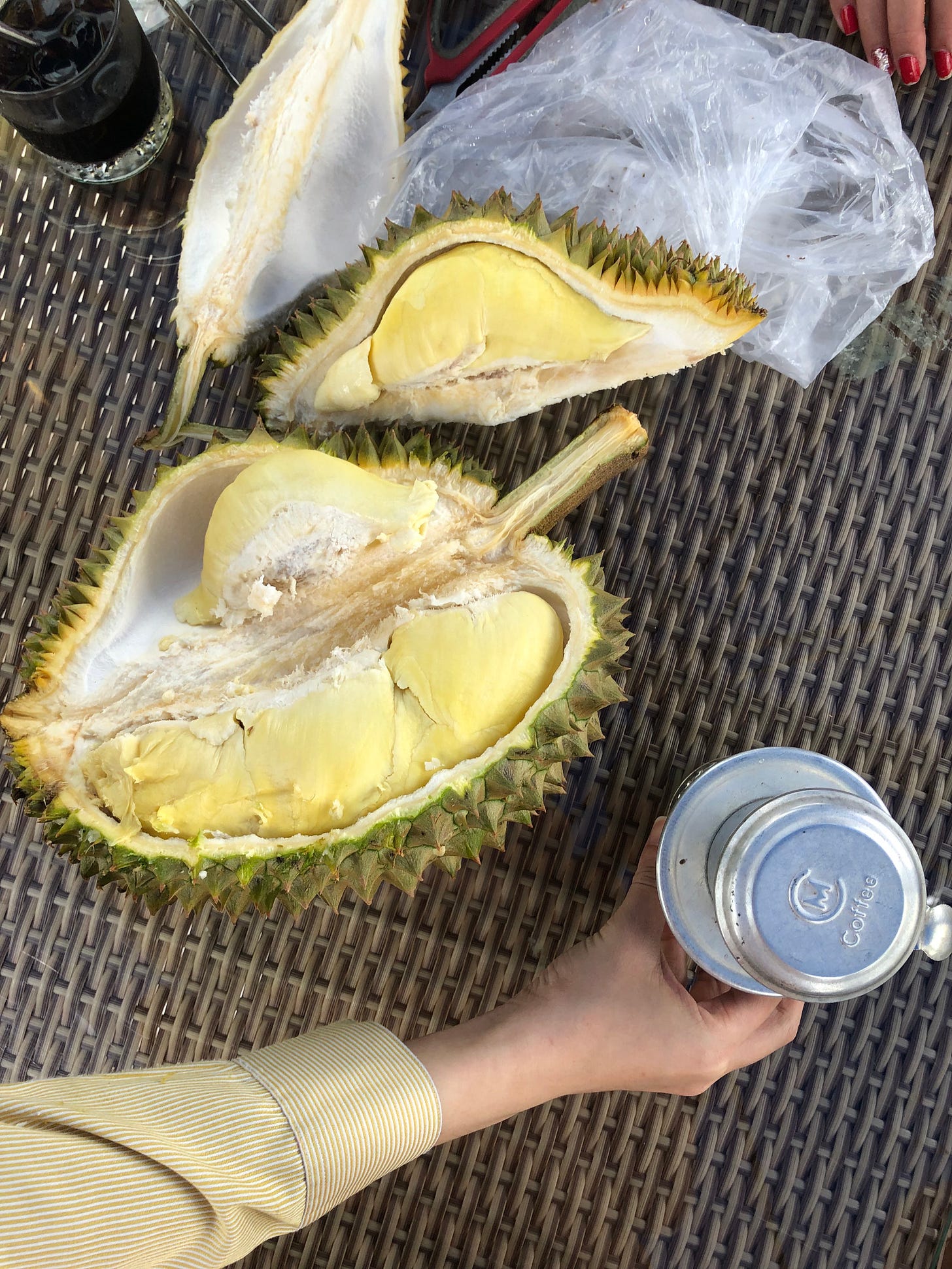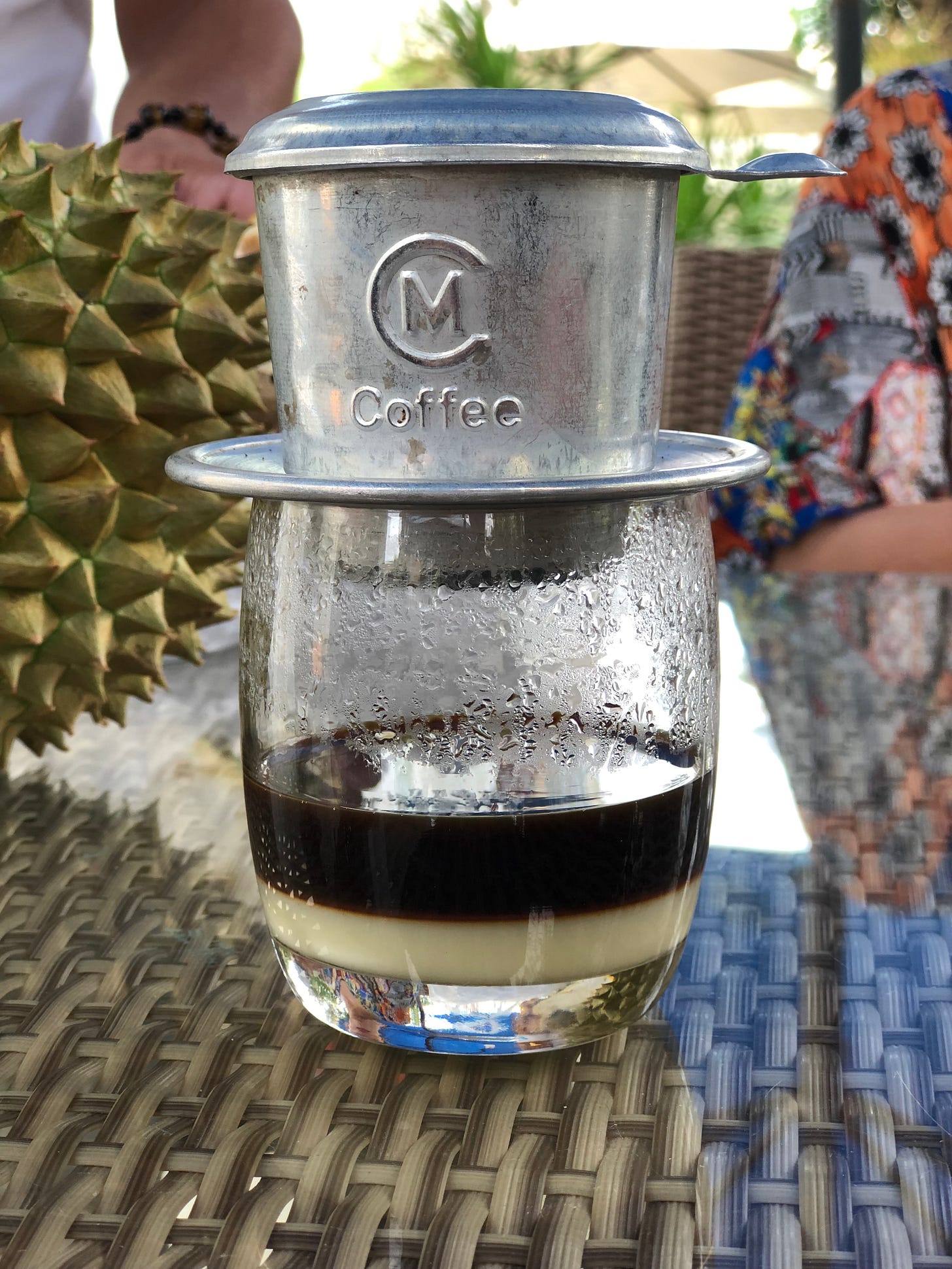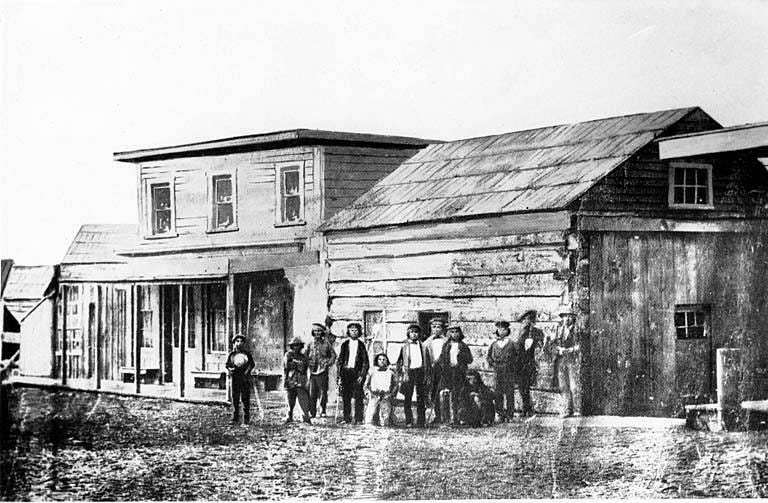1851 - 1907. After Seattle was founded, but before Pike Place Market.
My best friend, Laura, is a much more adventuresome eater than I am. She’ll eat just about anything you put in front of her. My husband is more adventurous, too. He ate a water bug at Nue once, colorless and gray, served on a plate.
“What did it taste like?” I asked. “It reminded me of soft shell crab,” he said.
He ate balut with my son when we went to Vietnam, too. Hell, no. I did not. I’ve eaten escargot, rabbit, and duck in France, but only squeamishly. And eating insects as a protein source? Ummm, no, regardless of the fact that insects are a daily food source in many parts of the world. What is it about foods common in other cultures that is so difficult to accept? Are Americans more averse to eating outside their comfort zones than other nationalities? And if so, why? What is it about foods from other cultures that scare us? Food is comfort, culture, dominance and power. My hypothesis is that we are scared that we will lose any combination of those things by consuming multicultural foods, especially if we’re American.
Why am I telling you about this? Because I found an interesting account by Arthur Denny, one of the founders of Seattle, in his writings “Pioneer Days on Puget Sound”.1 When a high tide washed away his last barrel of pork, he was really upset, wondering what the heck he and his family were going to eat, despite the abundance of edible plants and animals in the nascent Seattle that had fed the region’s indigenous people for tens of thousands of years:
In the winter of 1852-53, but few vessels visited the Sound for several months, and as a consequence it was time of great scarcity, amounting almost to distress. Our pork and butter came around Cape Horn and flour in barrels from Chili, sugar mostly from China in Mats. That fall I paid $90 for two barrels of pork, and $20 a barrel for flour. I left one barrel of the pork on the beach in front of my cabin, as I supposed above high tide, until it was needed. just about the time to roll it up and open it there came a high tide and heavy wind at night, and like the house that was built upon the sand it fell, or anyway it disappeared. It was the last barrel of pork in King County2, and the loss of it was felt by the whole community to be a very serious matter. There were different theories about it. Some said it would float and had gone out to sea. Others thought it had rolled down by the action of the waves into deep water. We all turned out at low tide in the night with torches and searched the beach from the head of the bay to Smith's Cove but the pork has not yet been heard from. After the loss of the pork our flour and hard bread gave out, but fortunately we had a good supply of sugar, syrup, tea and coffee, and with fish and venison we got along quite well while we had potatoes, but finally they gave out. We then had to make a canoe voyage to the Indian settlement on Black river to get a fresh stock of potatoes. Flour sold as high as $40 a barrel, but finally the stock was exhausted so that it could not be had on the Sound at any price until the arrival of a vessel which did not occur for six weeks or more. This was the hardest experience our people ever had, but it demonstrated the fact that some substantial life supporting food can always be obtained on Puget Sound though it is hard for a civilized man to live without bread.
EAT SALMON, ARTHUR! Duh. The streams overflowed with it back then and it’s much better for you than pork. The 22 members of the Denny Party, which he led to the Pacific Northwest in the spring of 1851, landed at Alki Point on November 13 of that year, then migrated across the water of Elliott Bay to the mud flats that are now Pioneer Square.3 There were no restaurants then, of course, but the first one to open in Seattle was Yesler’s Cook House just two years later in 1853. In her records of “Restaurants of Seattle 1853-1960”, Hattie Graham Horrocks writes:
Sadly, she doesn’t say anything about what they served at the cook house, but I imagine it consisted of some combination of pork, flour, sugar, butter, tea, coffee, and potatoes.
Next Up
More on Seattle’s founding, I think. And further exploration of the city’s earliest culinary establishments.
Food is about dialogue. What are some foods from other cultures that you never thought you’d eat but did? What are some foods you know you’ll never, ever eat?
Wait, what? It was called King County, even back then?
To be fair, Arthur’s younger brother, David, got here first, on a mission to survey the land while Arthur waited in Portland. 10 Who Shaped Seattle: David Denny beat founders to Elliott Bay
OTHER RESOURCES
Dive into Seattle restaurant history starting with the city’s first cookhouse
Yesler, Henry L., Sawmill, Cook House, Pioneer Square, Seattle, WA








